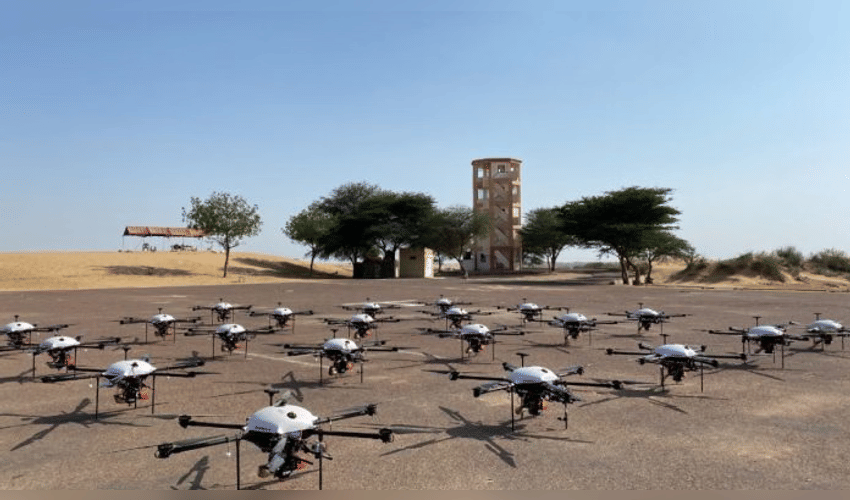Military
Defence Acquisition Council Clears India's Advanced CLRTS/D Long-Range Swarm Drones

India’s Defence Acquisition Council has recently approved the Collaborative Long Range Target Saturation/Destruction System (CLRTS/D), a pioneering autonomous swarm drone program aimed at strengthening the Indian Air Force’s deep-strike capabilities. This initiative marks a significant leap forward in India’s indigenous defence technology, focusing on deploying intelligent drone swarms to neutralize critical enemy infrastructure effectively.
The CLRTS/D swarm involves a large number of drones that operate fully autonomously, even in heavily contested electronic warfare environments. These drones boast an impressive operational range of over 1,100 kilometers, allowing them to strike far beyond frontlines with precision and agility. What makes this system especially unique is its decentralized AI architecture—each drone acts independently yet cooperates seamlessly with others to maintain mission continuity and adapt to evolving targets without needing centralized control.
Regarding payload, about 80% of the drones in the swarm are equipped with specialized warheads capable of high-speed top-attacks, spiraling loiter patterns, shelter penetration, and even disruption of enemy electrical grids. The remaining 20% function as intelligence units, equipped with advanced sensors and AI-powered data links to share real-time battlefield intelligence, prioritize targets, and adjust swarm formations dynamically.
Strategically, CLRTS/D is designed to paralyze enemy airbases, radar installations, power grids, and hardened shelters, effectively degrading their aerial operational capacity early in the conflict. The swarm’s ability to regenerate formations and self-coordinate offers a potent force multiplier, combining distributed decision-making with long endurance and precision strike capability.
The technical backbone of CLRTS/D includes indigenous propulsion systems, possibly mini-turbojet or hybrid electric engines, and AI-enhanced avionics integrating GPS, IRNSS navigation, encrypted communications, and DSMAC (Digital Scene Matching Area Correlation) technology for navigation in GPS-denied zones. The drones' collaborative command and control systems use deep learning to pre-map target zones yet allow drones to autonomously modify flight paths based on real-time battlefield data.
This program’s industrial framework is a collaboration between the Aeronautical Development Establishment (ADE) under DRDO and key companies like HAL, BEL, TASL, Paras Defence, NewSpace Research & Technologies, and Adani Defence Systems. Testing is planned at the Aeronautical Test Range in Chitradurga, with a focus on indigenous manufacturing under the Make in India initiative, ensuring scalability and modular upgrades for future enhancements such as hypersonic or loitering drone variants.
The approval of CLRTS/D underscores India’s commitment to integrating cutting-edge AI, autonomous systems, and drone technology into its defence arsenal, significantly enhancing its strategic strike capabilities and situational awareness. This step is likely to influence India’s military doctrine by emphasizing drone swarming technology as a key force multiplier, setting a new benchmark for precision and autonomy in air warfare. Such advancements also align with India’s broader push in drone and counter-drone technologies, evidenced by successful tests of systems like Bhargavastra, a low-cost counter-swarm drone defense system, showing India's holistic approach to drone warfare—both offensive and defensive.



